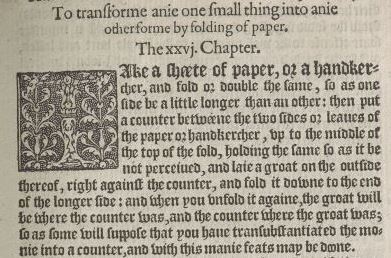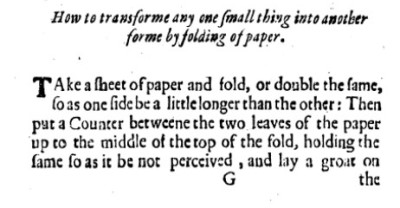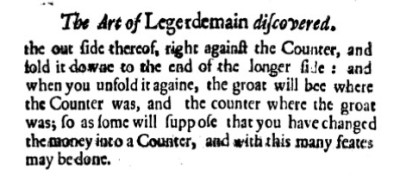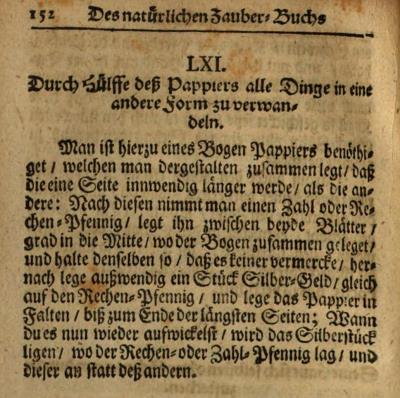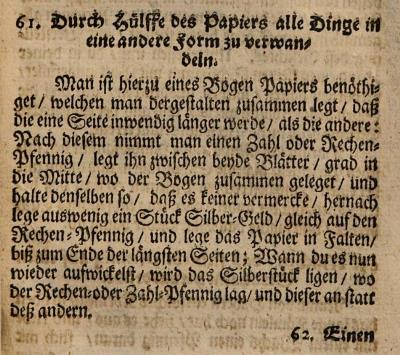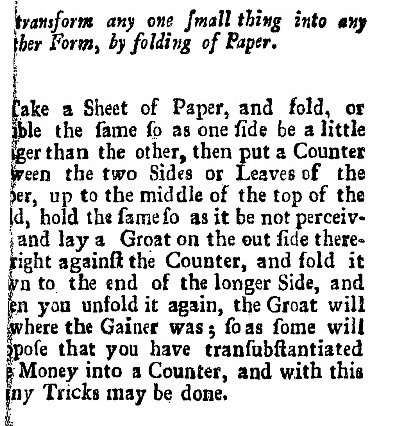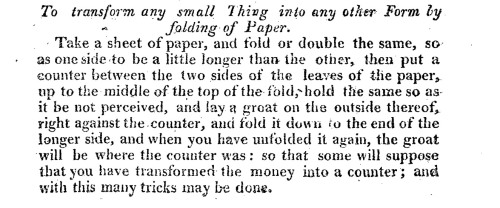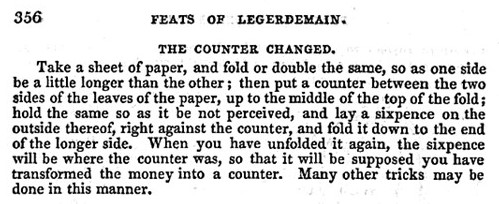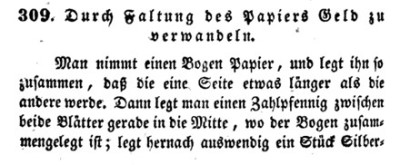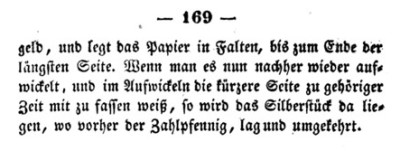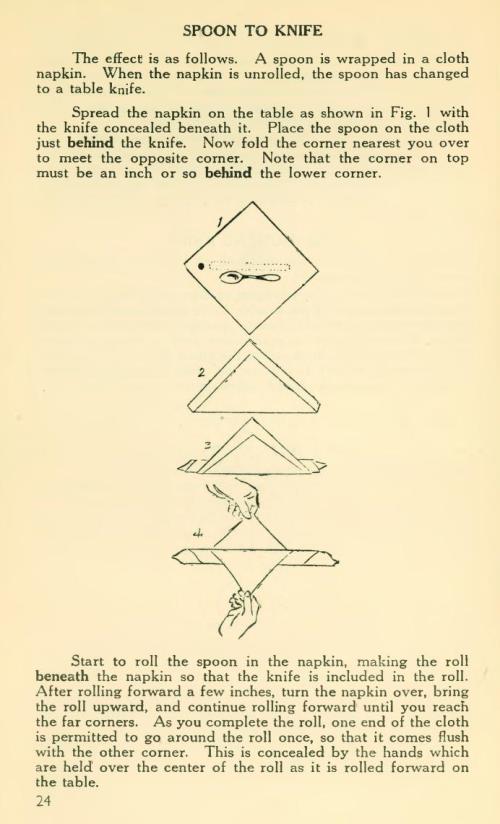| The Public Paperfolding History Project
Last updated 23/12/2023 x |
|||||||
| The Fold and Switch Effect | |||||||
| This
page attempts to record what is known about the origin
and history of the magical effect that I call the Fold
and Switch Effect, which appears to have no established
name in magical circles. Please contact me if you know
any of this information is incorrect or if you have any
other information that should be added. Thank you. This page includes information about what is effectively the same effect achieved by rolling up a napkin. ********** 1584 The earliest publication of this effect that I know of is in 'The discoverie of witchcraft' by Reginald Scot, Esquire, first published in 1584 in a section which also describes the Buddha Papers effect.
********** The effect also appears: 1634 In 'Hocus Pocus Junior', which was published in London in 1634.
********** 1702 In 'Neueröffnete Raritäten und Kunst-Kammer' by Simon Witgeest, which was published in Nurnberg in 1702.
********** 1707 In 'Natürliches Zauber-Buch oder neuer Spiel-Platz der Kunste' by Simon Witgeest, which was published in 1707.
********** 1722 In 'The Whole Art of Legerdemain or Hocus Pocus in Perfection' by Henry Dean, which was published in London in 1722.
********** c1795 In 'The Conjuror's Repository', which is undated but thought to have been published c1795.
********** 1828 In 'The Boy's Own Book' by William Clarke, which was was published by Vizetelly, Branston and Company in London in 1828, includes the effect under the name of 'The Counter Changed'.
********** 1839 In the 5th edition of 'Das Buch der Zauberei' by Johann August Donndorff, which was published in Vienna in 1839.
********** 1941 The version of this effect achieved using a rolled-up napkin appears in 'After the Dessert' by Martin Gardner, which was published by Max Holden in New York in 1941.
********** |
|||||||
